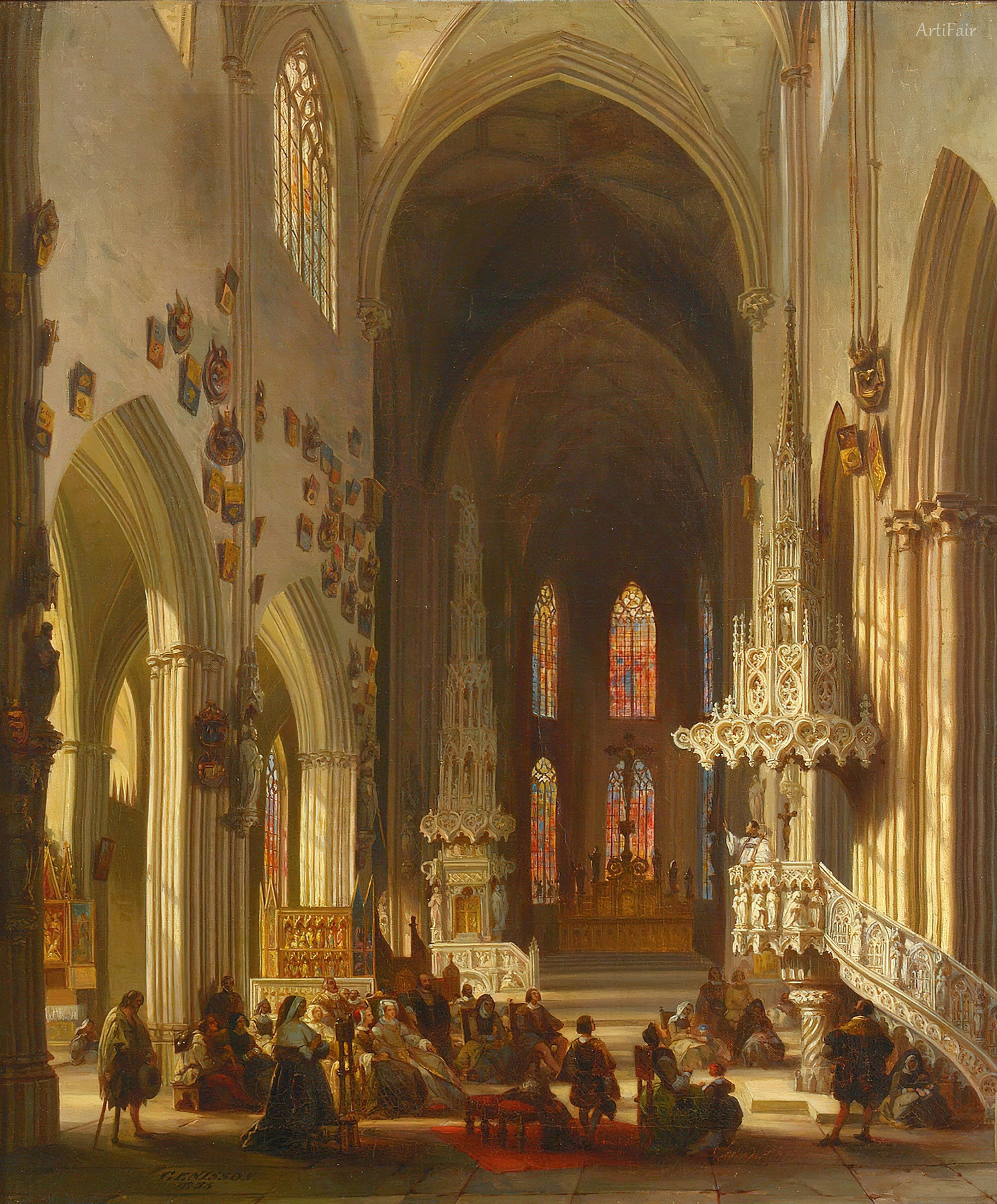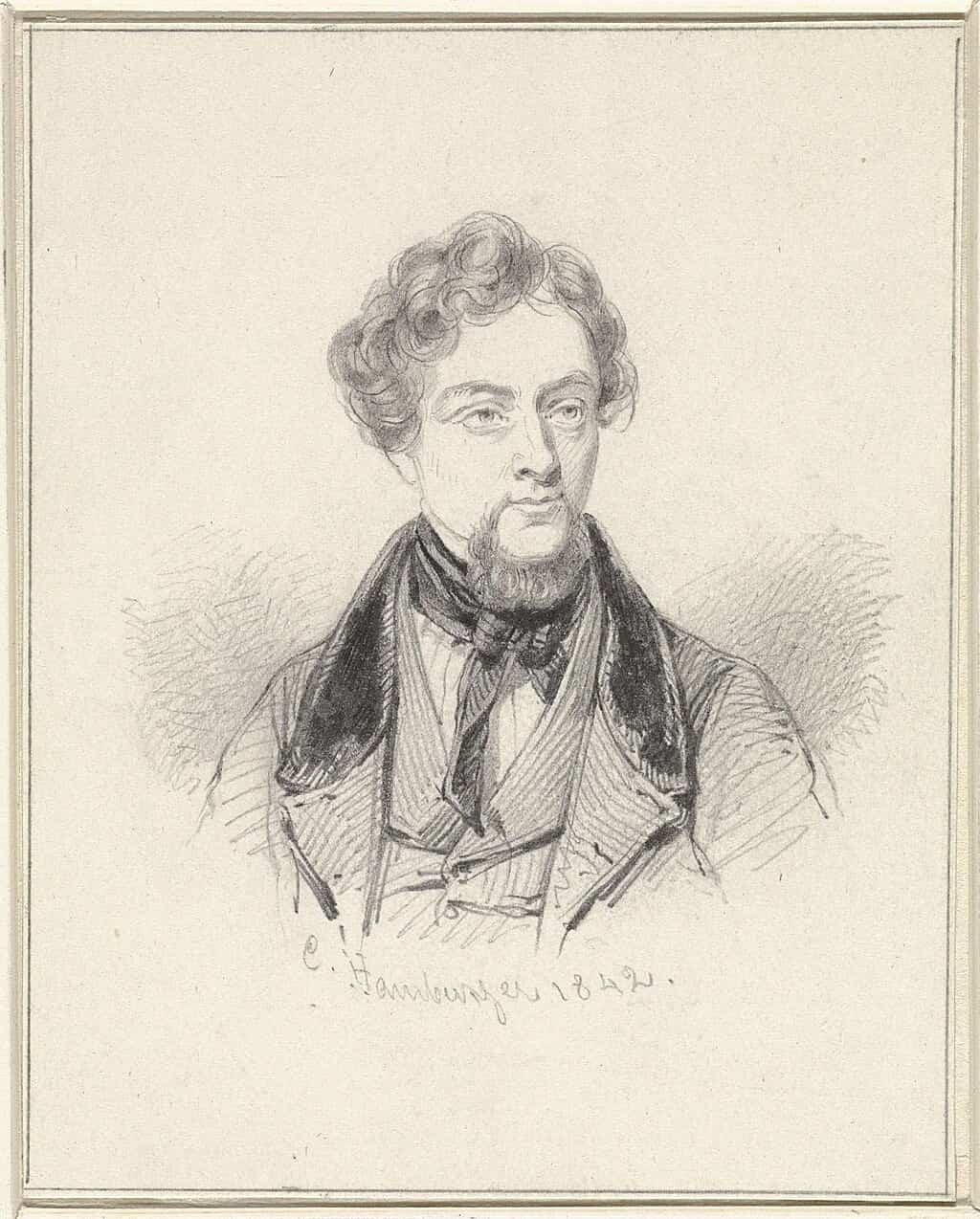

Jules Victor Génisson
BE
31
Artworks
1805 - 1860
Lifespan
Artist Biography
Jules Victor Génisson (1805–1860) was a distinguished 19th-century Belgian painter, celebrated for his mastery of architectural painting, particularly the majestic interiors of European churches and cathedrals. Born on February 24, 1805, in Saint-Omer, France, Génisson’s life and work bridged the artistic traditions of both France and his adopted homeland, Belgium. He developed a unique style that combined meticulous realism with a profound sense of romantic atmosphere, transforming architectural spaces into stages for spiritual contemplation and historical reverence. His canvases are not merely documentary records but are imbued with a soul, capturing the interplay of light, shadow, and human presence within these grand edifices.
His artistic journey began with formal training at the prestigious Royal Academy of Fine Arts in Antwerp, a major center for artistic education in the Low Countries. There, he studied under the guidance of Mattheus Ignatius van Bree, a prominent painter of historical and neoclassical scenes. This academic grounding provided Génisson with a strong foundation in perspective, composition, and figurative drawing, skills that he would expertly apply to his chosen specialization. While van Bree focused on grand historical narratives, Génisson adapted this sense of drama and scale to the architecture itself, making the buildings the primary subjects of his artistic storytelling.
Génisson’s oeuvre is characterized by his profound ability to render the complex details of Gothic and Baroque architecture with extraordinary precision. He was a master of light, skillfully using chiaroscuro to create dramatic contrasts that emphasize the soaring height of vaulted ceilings, the intricate details of stained-glass windows, and the solemn atmosphere of sacred spaces. His paintings often include small figures, or staffage—worshippers, priests, or visitors—which serve to animate the scene and provide a sense of scale, highlighting the immense grandeur of the architecture surrounding them. This technique allowed him to blend the genres of architectural and genre painting, creating works that are both visually impressive and emotionally resonant.
To find subjects for his large-scale paintings, Génisson traveled extensively throughout Western Europe. His journeys took him to numerous cities across Belgium, France, and likely Germany, where he would sketch and study the continent's most significant cathedrals and churches. These travels were integral to his practice, providing a continuous source of inspiration and allowing him to capture a wide array of architectural styles. His dedication to his craft and the unique appeal of his work brought him considerable success. His paintings have remained sought after, with his works appearing at major auctions. A testament to his market value is the sale of his painting 'FIGURES ATTENDING MASS', which fetched a record price of $62,356 at Sotheby's in Amsterdam in 2006.
Jules Victor Génisson’s legacy lies in his elevation of architectural painting to a high art form during a period dominated by historical and portrait painting. He not only captured the physical appearance of buildings but also their historical and spiritual essence. As a dedicated teacher, he passed on his specialized knowledge and passion to the next generation, notably to his own son, Georges-Paul Génisson, and to his student Joseph Maswiens, ensuring the continuation of this distinct artistic tradition. Génisson died in Bruges, Belgium, on October 10, 1860, leaving behind a body of work that continues to be admired for its technical brilliance, atmospheric depth, and its timeless celebration of Europe’s architectural heritage.